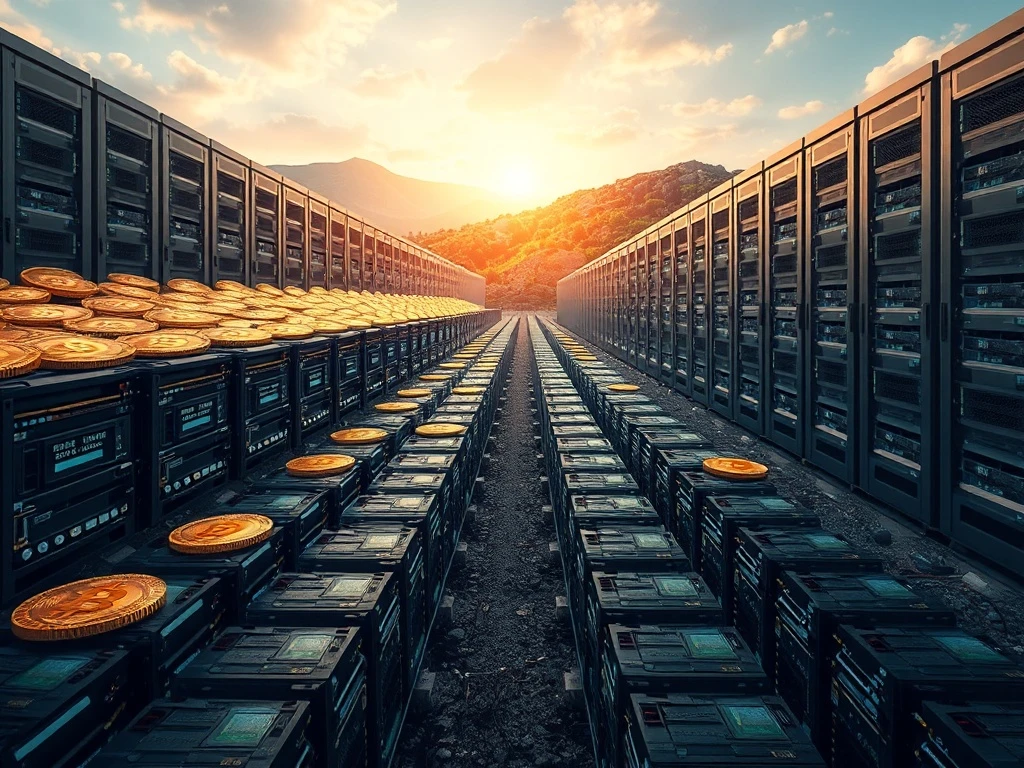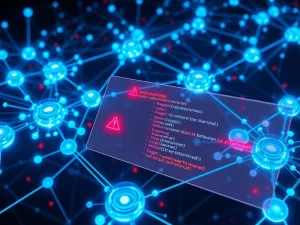Bitcoin Miners’ Successful AI Pivot: A Lifeline After the Halving

The 2024 Bitcoin halving event significantly reduced the rewards for discovering new blocks, putting financial pressure on Bitcoin miners. In response, many firms looked for ways to diversify revenue streams beyond just mining. A major trend emerged: a strategic AI pivot, shifting resources towards high-performance computing and data center hosting for artificial intelligence companies. This move has proven to be a crucial lifeline for some and a smart long-term play for others.
Bitcoin Miners Make a Strategic AI Pivot
Facing the reality of reduced Bitcoin earnings after the halving, many Bitcoin miners realized the need to adapt. Their existing infrastructure – large data centers, power connections, and cooling systems – is also suitable for hosting the powerful GPUs needed for AI computation. This realization triggered an AI pivot across the industry. Some companies began repurposing their facilities, investing in GPUs, and signing deals to provide computing power to AI firms. This diversification isn’t just about survival; it’s about building more resilient business models less reliant solely on Bitcoin’s block reward.
AI Pivot Saves This Bitcoin Miner
Core Scientific stands out as a prime example of how an AI pivot can turn a company’s fortunes around. The company had filed for bankruptcy in late 2022 but emerged in early 2024. Instead of focusing purely on mining, Core Scientific transitioned into a colocation provider, leasing its data center space for high-performance computing, particularly for AI. A significant 12-year, $3.5-billion deal with CoreWeave to host HPC operations highlighted this shift. While its Q1 revenue saw a decrease, partly due to the halving and operational changes, the market reacted positively to the AI focus. News of CoreWeave potentially acquiring the company further boosted its stock, demonstrating the market’s validation of the AI pivot strategy.
Crypto Mining Firms Embrace AI as a Side Hustle
For some crypto mining firms, AI is becoming a notable but not dominant part of the business. Hut 8, for instance, formalized its AI ambitions by launching Highrise AI in September 2024. This subsidiary offers GPU-as-a-Service, deploying specialized Nvidia H100 chips for cloud-based AI compute services. This initiative came with long-term revenue-share deals, providing a buffer against tightening Bitcoin mining margins post-halving. While Hut 8’s Bitcoin production decreased in Q1 2025 compared to the previous year, the company increased its hashrate and maintains a large Bitcoin treasury. AI currently represents a smaller portion of its overall business, as the company continues to expand its core Bitcoin mining operations, even raising significant capital for new equipment.
Growing Revenue from AI for Some Bitcoin Miners
Other Bitcoin miners are seeing their AI investments contribute increasingly meaningful revenue. Companies like Iren (formerly Iris Energy) and Hive have actively invested in Nvidia GPUs and are securing AI contracts. Iren began purchasing GPUs in early 2024 and had thousands deployed by mid-2025, with AI cloud revenue showing steady growth. This AI business is developing alongside its Bitcoin production. Similarly, Hive shifted focus in mid-2023 and made significant investments in GPU clusters. For their 2025 fiscal year, Hive reported over $10 million in revenue from AI and HPC hosting, a substantial increase and now representing nearly 9% of their total revenue. Both companies are building dedicated facilities to support their expanding AI operations, indicating a long-term commitment to this revenue stream.
Top Bitcoin Miners Explore Data Centers for Future Growth
The largest Bitcoin miners, such as Riot Platforms and MARA Holdings, are also exploring the AI and HPC space, viewing it as groundwork for future diversification rather than an immediate lifeline. Riot is evaluating converting significant power capacity at its large Texas facility into high-performance infrastructure suitable for AI workloads. While they haven’t announced major AI contracts yet, the scale of their facilities positions them well for large clients needing extensive data centers. Riot maintains strong financial health and holds a substantial Bitcoin treasury, allowing them to strategically explore AI without immediate pressure. MARA has developed specialized cooling systems for dense compute workloads, including AI, and is piloting HPC test sites. With the largest Bitcoin treasury among publicly listed miners, MARA is also taking a long-term view, positioning itself in the edge computing market. Their strong Bitcoin holdings provide financial stability as they build out these new capabilities.
The Miner That Ditched AI
It is worth noting that not all miners are pursuing the AI path. Canaan, primarily a manufacturer of Bitcoin mining hardware, announced in July 2025 that it was shutting down its AI chip division. As a smaller player in the ASIC market, Canaan opted to focus squarely on its core business of providing mining hardware, choosing a different strategy for long-term resilience compared to firms making the AI pivot.
Bitcoin Halving Impact and the AI Response
The 2024 Bitcoin halving served as a catalyst, accelerating the trend of diversification among Bitcoin miners. The reduction in block rewards necessitated new revenue sources, and the burgeoning AI market provided a compelling opportunity. The AI pivot, leveraging existing infrastructure for data centers and investing in GPUs, has allowed many crypto mining firms to build more robust and diversified businesses. This strategic shift helps mitigate the direct impact of reduced mining rewards and positions these companies for growth in the expanding high-performance computing sector.
In conclusion, the gamble by Bitcoin miners on AI last year has largely paid off. From providing a critical lifeline for struggling companies to becoming a significant new revenue stream or a strategic future play, the AI pivot has reshaped the landscape for many in the crypto mining industry, offering resilience and new avenues for growth in the post-halving era.









